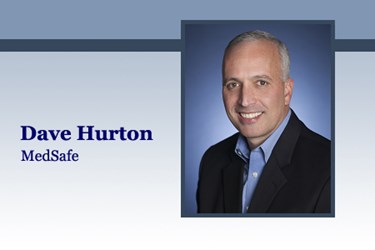5 Steps To Take Following A Needlestick

By Dave Hurton, Key Account Director, MedSafe
According to The Centers for Disease Control and Prevention (CDC), nearly 385,000 sharps-related injuries occur annually in the U.S. healthcare industry — an average of more than 1,000 per day. A sharps-related injury is a penetrating stab wound from a needle, scalpel, or other sharp object that may result in exposure to blood or body fluids.
More than 20 bloodborne pathogens have been reportedly transmitted from these types of injuries, some leading to severe and fatal infections such as hepatitis B, hepatitis C, or human immunodeficiency virus (HIV). In fact, about 2 percent of needlestick injuries are likely to be contaminated with HIV.
Most sharps-related injuries involve nurses, physicians, laboratory staff, or other healthcare worker. They are typically a result of fatigue, using improper procedures, dangerous equipment, limited staff experience, and stressful work conditions in a fast-paced environment. Injuries can occur when employees dispose of needles, collect materials used in medical procedures, draw blood, or handle trash or dirty linens.
The projected medical and work productivity costs from sharps-related injuries are estimated to be $188.5 million per year in the U.S. with direct costs ranging from $500 to $5,000 per injury depending on the treatment provided. It’s hard to project the actual total costs as nearly half of all injuries go unreported. However, sharps-related injuries clearly have a significant economic impact on the healthcare industry. According to the American Hospital Association, one case of severe infection by bloodborne pathogens can add up to $1 million or more in expenditures for testing, follow-up, lost time, and disability payments. Costs harder to quantify include stress from injury, emotional cost from fear and anxiety of contracting a communicable disease or infection, lost time from work, expenses from laboratory testing, medical treatment, and the cost of any litigation.
There are standardized guidelines following a sharps-related injury that healthcare workers should use for post-exposure prevention, including antiviral medications for individuals exposed to HIV and hepatitis B or C virus. Below is a list of steps recommended by the CDC that should be followed after a sharps injury.
Steps To Take Following A Needlestick
Immediately follow these steps if you experience a sharps injury at work:
- Wash wound with soap and water;
- Flush out mouth, nose, or skin with water;
- Irrigate eyes with water, saline, or sterile irrigants;
- Report the incident to your supervisor; and
- Immediately seek medical treatment at the nearest ER or treatment facility.
What Can Employers Do To Prevent Injury In The Workplace?
- Implement the use of engineering controls to reduce needlestick injuries.
- Avoid the use of needles when there are other safe alternatives.
- Implement use of devices with safety features.
- Set priorities and strategies for needlestick injury prevention by examining local and national information about risk factors.
- Ensure proper training of employees on the safe use and disposal of needles.
- Modify work practices that have an increased risk of a needlestick injury.
- Promote safety awareness in the work environment.
- Establish procedures for and encourage the reporting of all needlestick and other sharps-related injuries.
- Evaluate the effectiveness of prevention efforts and provide feedback on performance.
What Can Employees Do To Prevent Injury In The Workplace?
- Avoid recapping needles.
- Before beginning any procedure using needles, plan for safe handling and proper disposal.
- Help your employer select and evaluate devices with safety features.
- Use devices with safety features.
- Report all needlestick and other sharps-related injuries.
- Dispose of used needles in appropriate sharps disposal containers.
- Inform your employer of hazards from needles that you observe at work.
- Participate in bloodborne pathogen training and follow recommended infection prevention practices, including hepatitis B vaccination.
While healthcare workers certainly make an effort to avoid a needlestick injury, in the event that it does happen, procedures are in place to mitigate larger consequences. Employers should have a strategy in place from the outset for avoiding sharps injuries — per the steps above. And employees should simultaneously be diligent about following the points listed to avoid this type of injury.
